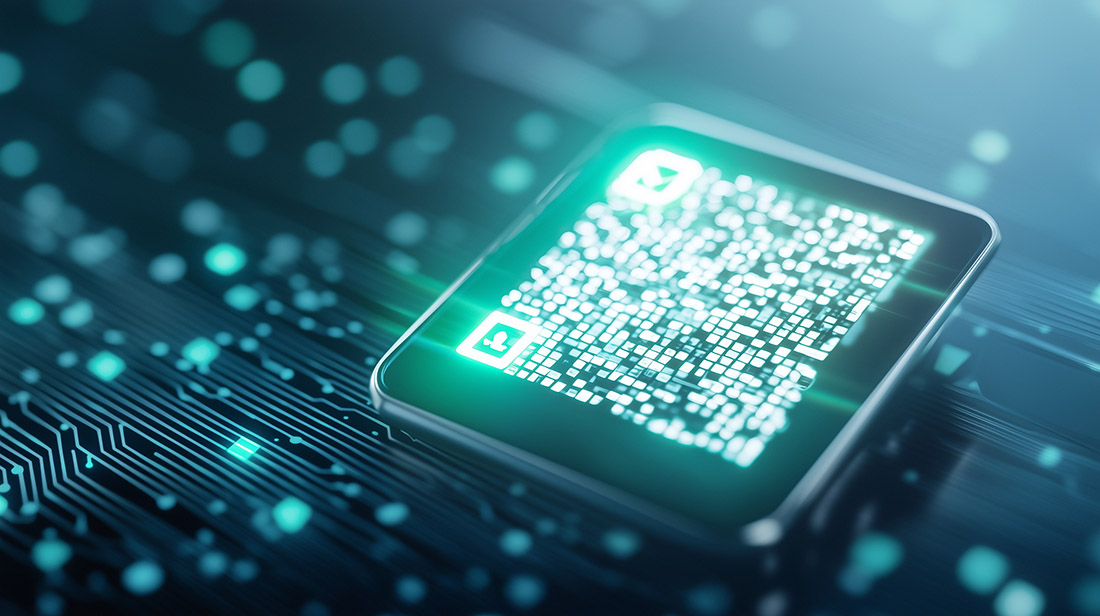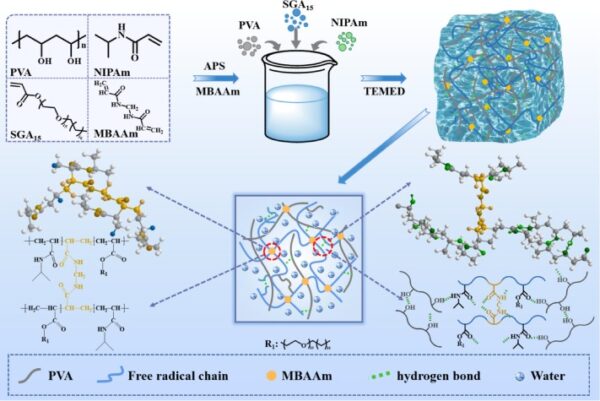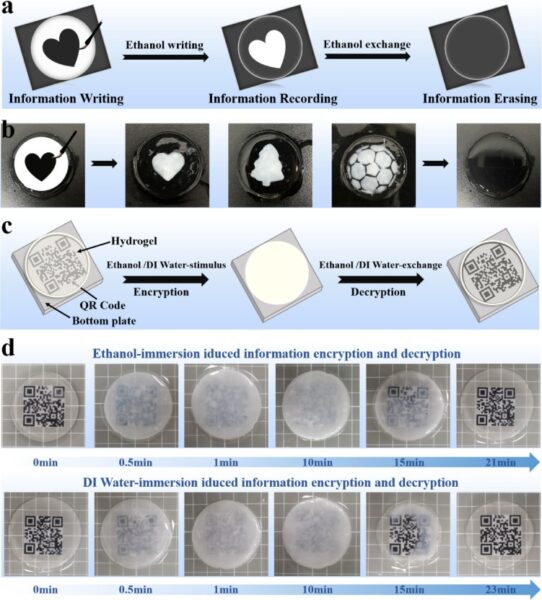Reversible Data Storage with Smart Hydrogels

Solvent-responsive hydrogel enables reversible, high-resolution data storage, encryption, and decryption with rapid switching and mechanical durability.
Researchers have developed a stimuli-responsive hydrogel that enables reversible data storage, encryption, and decryption through simple solvent exchange processes. The polyvinyl alcohol-n-isopropylacrylamide-octadecyl polyoxyethylene ether acrylate hydrogel (PPNS) material combines PVA, N-isopropylacrylamide (NIPAm), and octadecyl polyoxyethylene ether acrylate (SGA15) into a single network with covalent bonds and physical interactions.
You can also read: Digital Product Passports: Revolutionizing Transparency and Sustainability.
This network allows it to switch optical states—transparent to opaque—by exchanging water and ethanol, which act as environmental triggers. Because the change is fast and fully reversible, the hydrogel is a non-electronic platform for displaying hidden information.This makes it ideal for applications in secure labeling, low-power displays, and passive sensor technologies.

Synthesis roadmap of PPNS hydrogels. Courtesy of A stimuli-responsive hydrogel for reversible information storage, encryption and decryption.
How It Works: Solvent-Driven Transparency Switching
When placed in anhydrous ethanol, the hydrogel loses water and strengthens hydrogen bonding, which causes it to become opaque. Returning it to deionized water rehydrates the matrix, loosens the chains, and restores transparency in about twenty-three minutes. This switchable behavior depends on the refractive-index contrast created by solvent movement inside the polymer network.
Since the mechanism involves no permanent changes, the material can be cycled many times without losing responsiveness or visual clarity. Therefore, the hydrogel offers a reliable and sustainable method for solvent-triggered visual communication and optical control.
Optimizing Composition for Performance
The research team adjusted the concentration of the hydrophobic monomer SGA15 to find the most effective formulation. A 2 wt % concentration yielded the fastest switching and highest contrast between the transparent and opaque states. Additionally, this composition achieved the highest swelling ratio, around 408 %, after immersion for 270 hours.
This result shows that the structure remains stable despite significant solvent absorption and repeated solvent cycling. Thus, the 2 wt % version—PPNS-2 %—was chosen as the optimal candidate for further testing and applications.

Schematic illustration of the information recording process using ethanol gel writing (brushing). b) Schematic illustration of the different information recording processes through ethanol gel writing (brushing). c) Schematic illustration of the behaviors involved in quick response (QR) code encryption and decryption. d) QR code information with encryption and decryption behaviors through anhydrous ethanol. Scale bars: 10 mm. Courtesy of A stimuli-responsive hydrogel for reversible information storage, encryption and decryption.
Mechanical Durability for Repeated Use
Mechanical tests confirmed that PPNS-2 % is highly resilient under repeated deformation and solvent cycling conditions. The gel maintained elastic properties under shear stresses up to 366 Pa and frequencies up to 10⁵ rad·s⁻¹. After twenty-five full transparent–opaque cycles, the material showed no signs of fatigue, rupture, or structural failure. Because the network resists physical damage and deformation, it can be used in repeated display and encryption scenarios. This mechanical robustness ensures the hydrogel’s suitability for both industrial and wearable applications requiring long-term performance.
Ink-Free Writing and Erasing
Users apply ethanol directly onto the hydrogel to write patterns, which become visible only when the gel turns opaque. These patterns—such as QR codes or logos—instantly disappear when water rehydrates the material. Since the process uses no pigments or dyes, it remains clean, fast, and fully reversible. Users can rewrite information many times without damaging the hydrogel or losing visual clarity. This functionality allows the hydrogel to operate as a high-resolution, rewritable display for secure or time-sensitive information.
Unlocking Potential Applications
This hydrogel can function as a smart label that reveals security information only when exposed to a triggering solvent. It may also serve as a passive visual display for microfluidic chips where fluid flow dictates visibility zones. In wearable sensors, body fluids such as sweat could switch the gel’s appearance, signaling physiological changes in real time. Because the material is biocompatible and flexible, it integrates easily into existing wearable or packaging systems. As a result, PPNS opens new avenues for solvent-controlled encryption, display, and responsive sensing across multiple fields.
